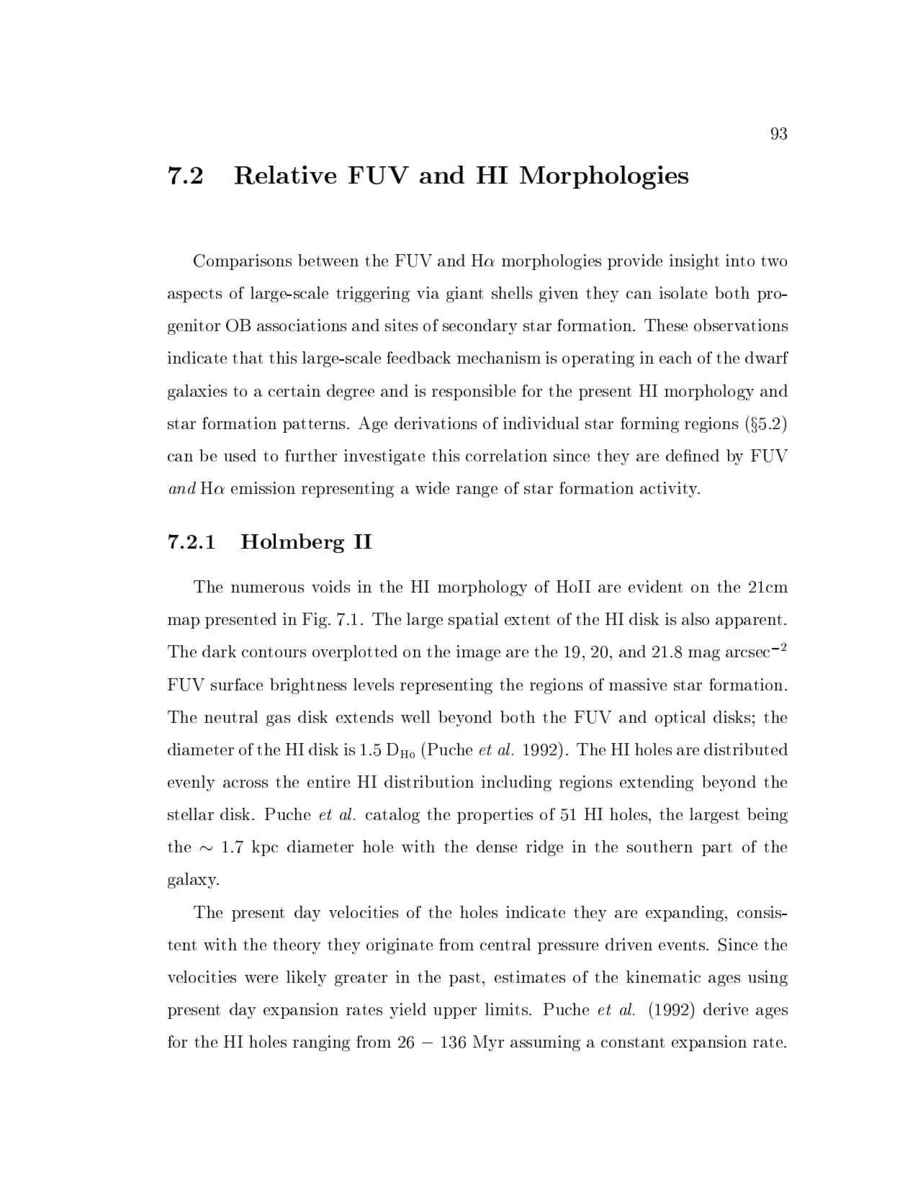
93
7.2
Relativ
e
FUV
and
HI
Morphologies
Comparisons between the FUV and H morphologies provide insight into two
aspects of large-scale triggering via giant shells given they can isolate both pro-
genitor OB associations and sites of secondary star formation. These observations
indicate that this large-scale feedback mechanism is operating in each of the dwarf
galaxies to a certain degree and is responsible for the present HI morphology and
star formation patterns. Age derivations of individual star forming regions
x
5.2
can be used to further investigate this correlation since they are de ned by FUV
and
H emission representing a wide range of star formation activity.
7.2.1 Holmberg II
The numerous voids in the HI morphology of HoII are evident on the 21cm
map presented in Fig. 7.1. The large spatial extent of the HI disk is also apparent.
The dark contours overplotted on the image are the 19, 20, and 21.8 mag arcsec
,
2
FUV surface brightness levels representing the regions of massive star formation.
The neutral gas disk extends well beyond both the FUV and optical disks; the
diameter of the HI disk is 1.5 D
Ho
Puche
et
al.
1992. The HI holes are distributed
evenly across the entire HI distribution including regions extending beyond the
stellar disk. Puche
et
al.
catalog the properties of 51 HI holes, the largest being
the
1.7 kpc diameter hole with the dense ridge in the southern part of the
galaxy.
The present day velocities of the holes indicate they are expanding, consis-
tent with the theory they originate from central pressure driven events. Since the
velocities were likely greater in the past, estimates of the kinematic ages using
present day expansion rates yield upper limits. Puche
et
al.
1992 derive ages
for the HI holes ranging from 26
,
136 Myr assuming a constant expansion rate.
